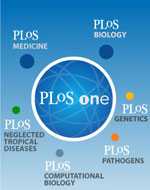PLoS ONE:英国科学家鉴定出癌干细胞新机制
2012-07-02 ZinFingerNase 生物谷
来自英国伦敦大学玛丽女王学院的研究人员发现两个展现干细胞如何能够发展成癌症的基因之间存在关联。这项研究成果近日在线发表 PLoS ONE期刊上。 在这项研究中,研究人员发现一种新的能够催化干细胞形成肿瘤的机制。 论文通讯作者、伦敦大学玛丽女王学院研究员Ahmad Waseem博士说,“这是一项非常令人意外的发现。我们着手研究干细胞基因K15(编码角蛋白15),其中人们曾认为该基因是正

来自英国伦敦大学玛丽女王学院的研究人员发现两个展现干细胞如何能够发展成癌症的基因之间存在关联。这项研究成果近日在线发表 PLoS ONE期刊上。
在这项研究中,研究人员发现一种新的能够催化干细胞形成肿瘤的机制。
论文通讯作者、伦敦大学玛丽女王学院研究员Ahmad Waseem博士说,“这是一项非常令人意外的发现。我们着手研究干细胞基因K15(编码角蛋白15),其中人们曾认为该基因是正常干细胞的一个生物标记分子。”
Waseem博士说,“通过我们的研究,我们发现K15与臭名昭著的癌基因FOXM1存在关联。我们发现FOXM1能够靶向K15从而诱导癌症形成。”
当干细胞存在问题时,癌症就产生。在整个人体中,干细胞能够执行内部修复。因而,干细胞功能丢失导致它们自己不受控制地生产而最终发展成肿瘤。
研究小组利用极其敏感的细胞和分子方法而建立起这种关联。
这项研究为人们在未来鉴定出新的抗癌药物铺平道路,而且这些药物经修饰后可能还能够靶向癌干细胞。
论文共同作者Iain Hutchison教授说,“我们对这项研究发现感到非常兴奋,因为它可能导致我们开发出更加有效的抗癌药物来靶向癌干细胞,从而阻止癌症复发。”

doi:10.1371/journal.pone.0038599
PMC:
PMID:
Two Mechanisms Regulate Keratin K15 Expression In Keratinocytes: Role of PKC/AP-1 and FOXM1 Mediated Signalling
Amrita Bose1, Muy-Teck Teh1, Iain L. Hutchison1, Hong Wan1, Irene M. Leigh2, Ahmad Waseem
Background Keratin 15 (K15) is a type I keratin that is used as a marker of stem cells. Its expression is restricted to the basal layer of stratified epithelia, and the bulge in hair follicles. However, in certain clinical situations including oral lichen planus, K15 is induced in suprabasal layers, which is inconsistent with the role of a stem cell marker. This study provides insights into the mechanisms of K15 expression in the basal and differentiating keratinocytes.
Methodology/Principal Findings Human keratinocytes were differentiated by three different methods; suspension in methylcellulose, high cell density and treatment with phorbol ester. The expression of mRNA was determined by quantitative PCR and protein by western blotting and immunostaining. Keratinocytes in suspension suppressed β1-integrin expression, induced differentiation-specific markers and K15, whereas FOXM1 (a cell cycle regulated protein) and K14 were downregulated. Rescuing β1-integrin by either fibronectin or the arginine-glycine-aspartate peptide suppressed K15 but induced K14 and FOXM1 expression. Specific inhibition of PKCδ, by siRNA, and AP-1 transcription factor, by TAM67 (dominant negative c-Jun), suppressed K15 expression, suggesting that PKC/AP-1 pathway plays a role in the differentiation-specific expression of K15. The basal cell-specific K15 expression may involve FOXM1 because ectopic expression of the latter is known to induce K15. Using chromatin immunoprecipitation, we have identified a single FOXM1 binding motif in the K15 promoter.
Conclusions/Significance The data suggests that K15 is induced during terminal differentiation mediated by the down regulation of β1-integrin. However, this cannot be the mechanism of basal/stem cell-specific K15 expression in stratified epithelia, because basal keratinocytes do not undergo terminal differentiation. We propose that there are two mechanisms regulating K15 expression in stratified epithelia; differentiation-specific involving PKC/AP-1 pathway, and basal-specific mediated by FOXM1, and therefore the use of K15 expression as a marker of stem cells must be viewed with caution.
本网站所有内容来源注明为“梅斯医学”或“MedSci原创”的文字、图片和音视频资料,版权均属于梅斯医学所有。非经授权,任何媒体、网站或个人不得转载,授权转载时须注明来源为“梅斯医学”。其它来源的文章系转载文章,或“梅斯号”自媒体发布的文章,仅系出于传递更多信息之目的,本站仅负责审核内容合规,其内容不代表本站立场,本站不负责内容的准确性和版权。如果存在侵权、或不希望被转载的媒体或个人可与我们联系,我们将立即进行删除处理。
在此留言














#Plos one#
66
#癌干细胞#
76